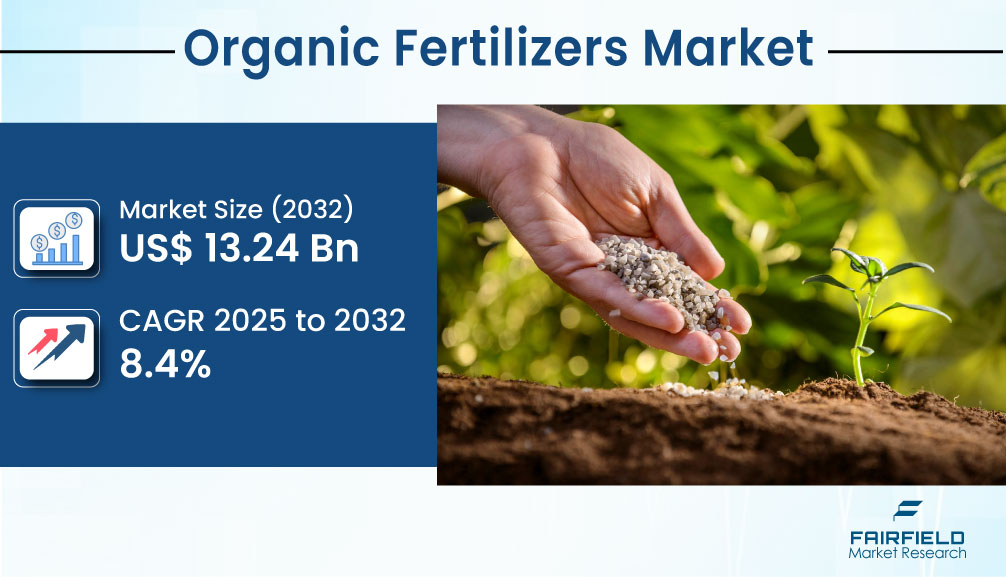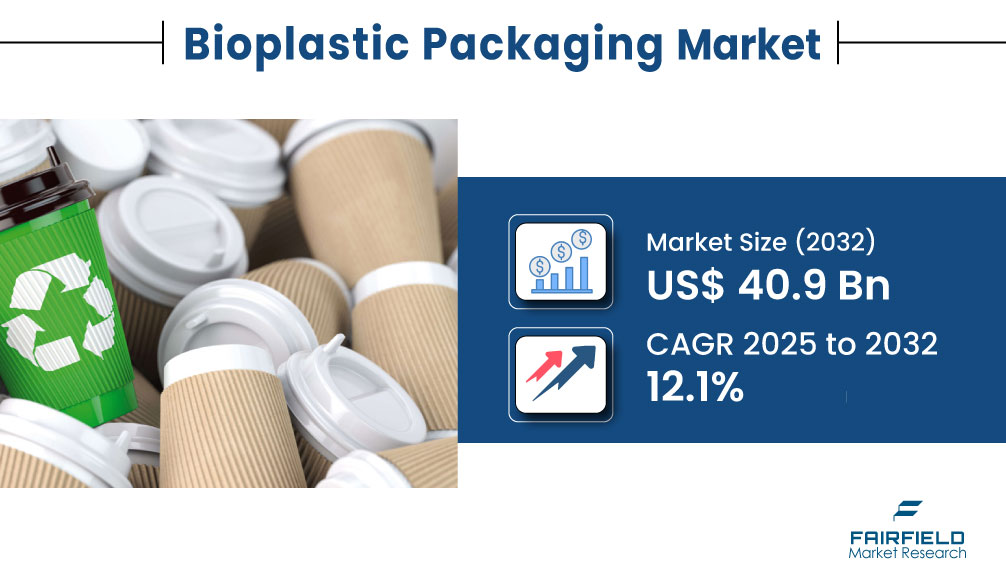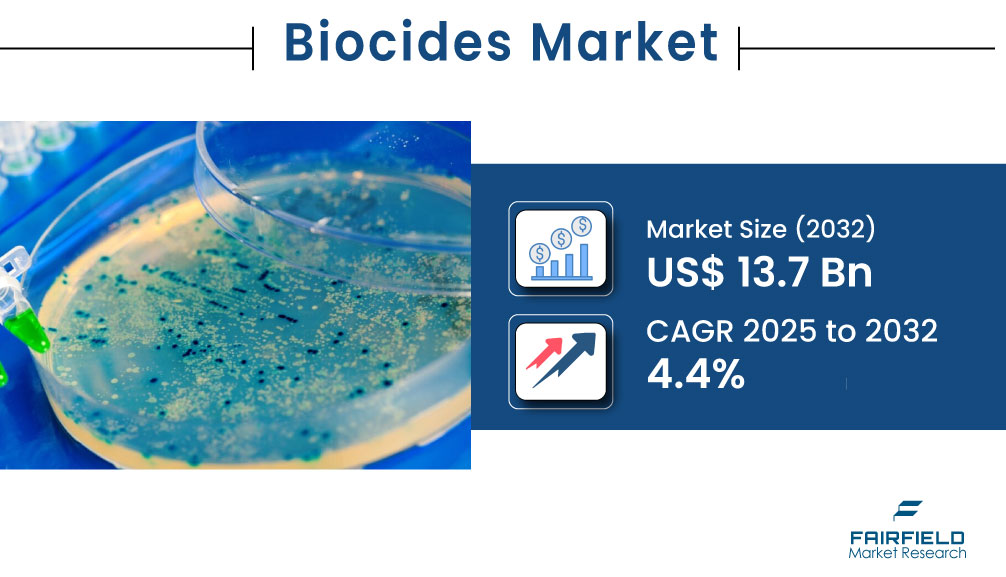Organic Fertilizers Market Poised for Growth Amid Shift to Chemical-Free Cultivation

Strong 8k brings an ultra-HD IPTV experience to your living room and your pocket.
The global organic fertilizers market is experiencing strong momentum as agriculture undergoes a major transformation toward chemical-free cultivation. According to Fairfield Market Research, the market is projected to grow from USD 7.52 billion in 2025 to USD 13.24 billion by 2032, registering a robust CAGR of 8.4% over the forecast period. This surge reflects an expanding preference for natural, environmentally friendly inputs that promote soil health, biodiversity, and food safety.
𝐂𝐥𝐢𝐜𝐤 𝐇𝐞𝐫𝐞 𝐅𝐨𝐫 𝐌𝐨𝐫𝐞: https://www.fairfieldmarketresearch.com/report/organic-fertilizers-market
Chemical-Free Cultivation Gains Ground Globally
As consumers become increasingly health-conscious and environmentally aware, demand is rising for food grown without synthetic chemicals. Organic fertilizers—sourced from plant matter, compost, animal waste, and beneficial microbes—are emerging as crucial alternatives to conventional chemical fertilizers.
Global organic agriculture now spans 72.3 million hectares across 187 countries, and this figure continues to grow steadily. In India alone, over 2.3 million hectares of land is under organic cultivation, with states like Madhya Pradesh leading the movement. Countries such as Australia, Spain, and Argentina are also expanding organic acreage, reinforcing the global transition to non-toxic farming methods.
Post-pandemic consumer behavior has further accelerated this trend, as health and food safety become top priorities. As a result, organic fertilizers have become indispensable to farmers looking to maintain soil fertility without harming human or environmental health.
Key Growth Determinants
Rising Demand for Chemical-Free Food
Consumers are increasingly rejecting crops grown with synthetic inputs, driving demand for natural fertilizers. Organic fertilizers support this transition by providing essential nutrients while preserving the soil's biological integrity. This is particularly relevant for fruits, vegetables, and grains consumed fresh or minimally processed.
Government Support and Sustainability Programs
Governments are actively promoting chemical-free farming through subsidies, training programs, and national organic missions. For instance, India’s Paramparagat Krishi Vikas Yojana (PKVY) and PM-PRANAM support organic fertilizer adoption, while the European Union’s Farm to Fork Strategy sets a target of 25% organic farmland by 2030.
Soil Health and Long-Term Agricultural Viability
Unlike synthetic fertilizers, organic inputs improve soil structure, increase organic matter content, and enhance microbial activity. This not only supports higher crop yields over time but also ensures long-term agricultural sustainability by reducing erosion and chemical runoff.
Key Growth Barriers
Limited Access and Awareness in Rural Areas
Many farmers, especially in developing economies, lack awareness of the long-term benefits of organic fertilizers or face limited access to high-quality inputs. This has slowed adoption in regions still dominated by chemical-intensive agriculture.
Slower Nutrient Release and Variable Effectiveness
Organic fertilizers typically offer a slower nutrient release rate than chemical alternatives, which may delay visible crop responses. Additionally, product effectiveness can vary depending on soil type, composting quality, and climatic conditions.
Market Opportunity: Expanding Demand for Premium Organic Inputs
As the organic food industry matures, there's a growing need for premium-grade fertilizers that deliver consistent results. Opportunities exist in the development of:
Crop-specific organic formulations
Enriched compost blends with microbial additives
Liquid and granular formats for modern farming systems
Startups and established firms are exploring biotechnology, vermicomposting, and bio-fermentation to produce next-generation fertilizers that support high-efficiency, chemical-free cultivation.
Market Trend: Integration of Organic Fertilizers into Climate-Smart Agriculture
The market is witnessing a notable shift as organic fertilizers are increasingly integrated into climate-smart agricultural practices, such as:
Regenerative farming
Agroforestry
Soil carbon sequestration projects
These practices align with global climate goals, presenting organic fertilizers as not only a soil-friendly solution but also a climate action tool.
Segments Covered in the Report
By Source
Plant-Based
Animal-Based
Mineral-Based
Plant-based fertilizers are expected to hold the dominant share due to their eco-friendly nature and widespread availability from agricultural byproducts.
By Form
Granules
Powder
Liquid
Granular and liquid formulations are gaining popularity for their ease of application and enhanced nutrient delivery efficiency.
By Crop Type
Cereals and Grains
Fruits and Vegetables
Oilseeds and Pulses
Turf and Ornamentals
By End-use
Agriculture
Horticulture
Residential and Gardens
Regional Analysis
North America
Holding a 32.5% share of the global market, North America is at the forefront of organic fertilizer adoption. The U.S. and Canada have expanded organic acreage and launched incentives for soil-health restoration. Canada's organic farmland increased by 23% in 2022, underscoring regional commitment to chemical-free agriculture.
Europe
With 28.1% of the global market, Europe continues to push sustainable practices through policies and farm-level transformation programs. Germany, France, and Italy are key players focusing on high-quality organic produce and long-term soil regeneration through organic inputs.
Asia Pacific
Asia Pacific—particularly India and China—is seeing surging demand due to supportive policy environments, high population-driven food demand, and availability of organic raw materials for fertilizer production.
Competitive Landscape
The global organic fertilizers market is moderately fragmented, with key players investing in product innovation, R&D, and farmer education to stay competitive. Leading companies include:
IFFCO
Yara
Coromandel International
The Scotts Company LLC
ICL
SPIC
Multiplex Group
T.Stanes and Company Limited
Fertoz
Midwestern BioAg
California Organic Fertilizers, Inc.
These firms are developing specialized organic blends, microbial-enhanced fertilizers, and nano-based delivery systems to cater to evolving farmer needs and regional compliance standards.
Recent Developments
In May 2024, Air Liquide announced a sustainable biomethane project using organic waste to generate fertilizer by-products, supporting circular agriculture.
In July 2023, the Indian Council of Agricultural Research (ICAR) released Zinc and Potassium Solubilizing Bio-fertilizers, proven to increase crop yields by 10–25% while reducing synthetic input usage.
Expert Opinion
“Chemical-free cultivation is more than a trend—it’s a necessary shift toward long-term food security and planetary health. Organic fertilizers are at the center of this transition, offering scalable solutions for farmers, policymakers, and food producers,” noted a senior analyst at Fairfield Market Research.
Conclusion
With rising demand for safe, nutritious, and sustainably produced food, the organic fertilizers market is well-positioned for long-term growth. As farmers adopt chemical-free practices to meet consumer expectations and environmental targets, demand for natural soil inputs will continue to accelerate.
Fairfield Market Research concludes that companies focusing on bio-based innovations, regulatory alignment, and farmer engagement strategies will be best equipped to lead in the era of chemical-free, climate-resilient agriculture.
Note: IndiBlogHub features both user-submitted and editorial content. We do not verify third-party contributions. Read our Disclaimer and Privacy Policyfor details.







